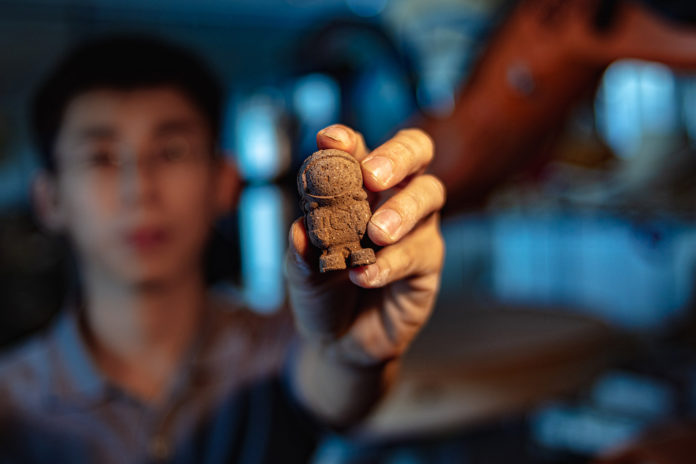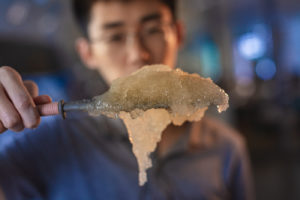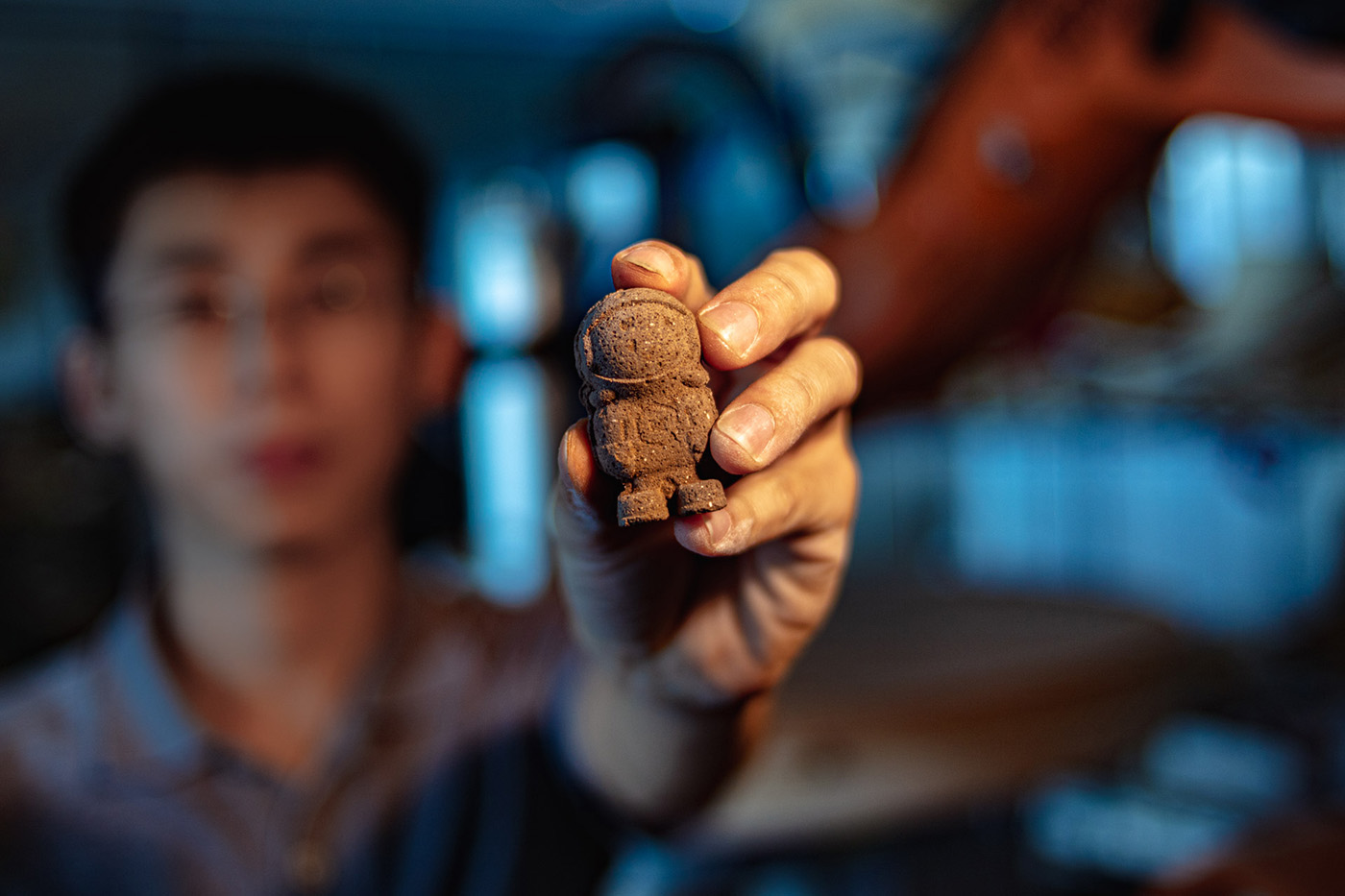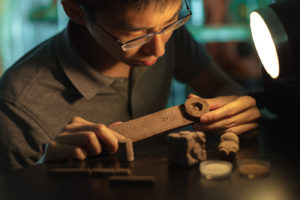Third-year PhD student Ng Shiwei tells us how learning from Earth’s circular ecosystem can help us build extraterrestrial settlements – and how little critters have an important role to play in this.
Imagine you’re leaving for Mars tomorrow on a space shuttle, and the baggage allowance is almost non-existent. What would you pack for long-term survival on the distant, barren planet?
“Insect eggs,” Shiwei answers.
“Insect eggs?” We ask in horrified tone. “Yah, insect eggs,” he repeats, matter-of-factly. But for someone working on a research that’s literally out of this world, Ng Shiwei, a PhD Engineering Product Development (EPD) student, couldn’t be more of a down-to-earth individual.
“Prof Javier (my principal investigator) and I have been looking into materials and manufacturing technology,” Shiwei explains as we enter the Fermart Lab, where he works his material science magic. “In nature, resources are never wasted. To this end, we’re exploring how we can create things in a local, closed-loop (or circular) environment. An extreme application of this concept where we cannot afford to waste resources would be a resource-starved place, like Mars,” he continues. “That’s how it all started.”
Their solution? Nothing too sci-fi fancy. In fact, it’s one of the most basic building blocks of life found in nature: chitin.
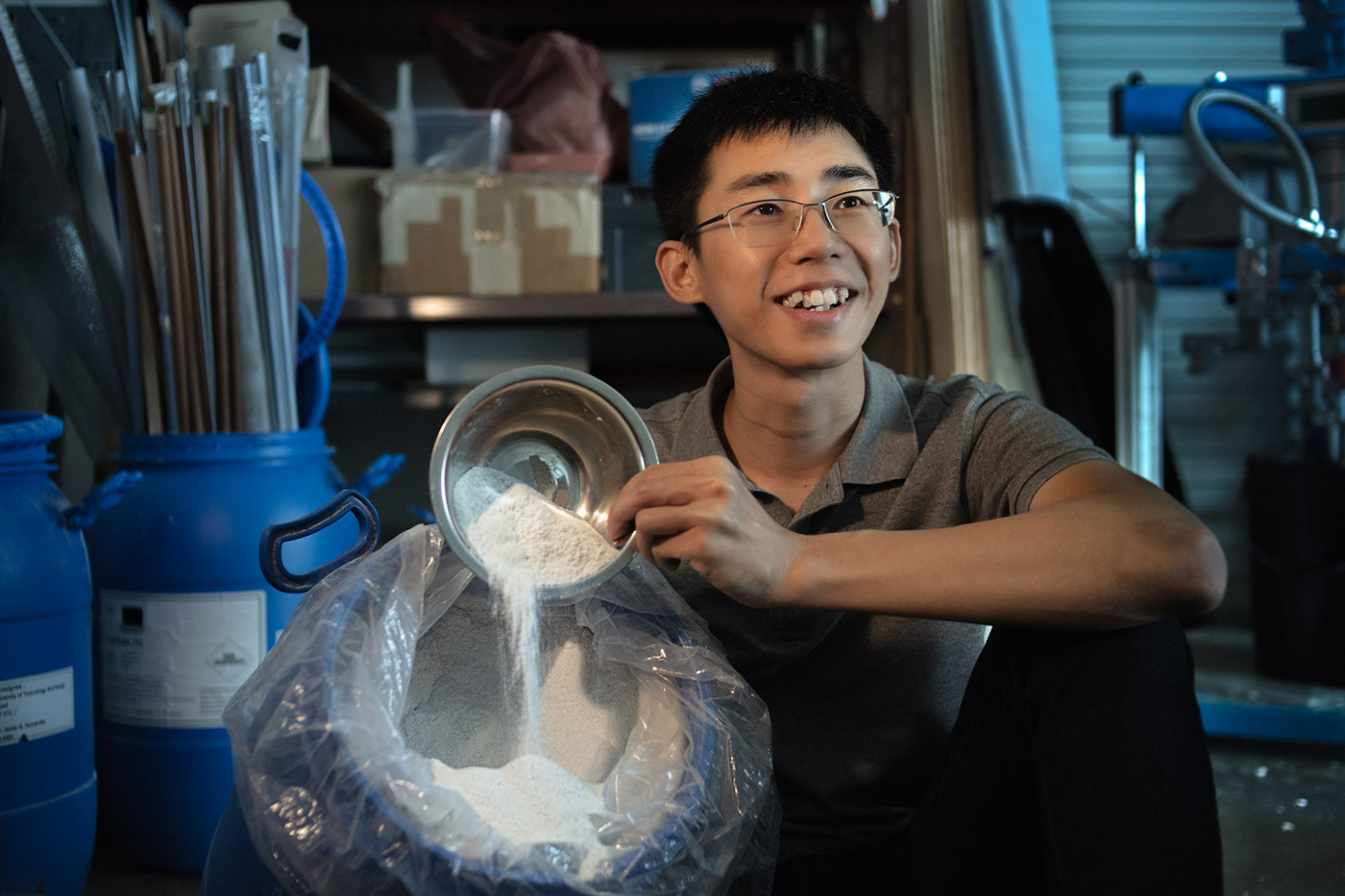 Chitosan powder before they’re dissolved in diluted acetic acid.
Chitosan powder before they’re dissolved in diluted acetic acid.
What is chitin?
“Chitin is the second most abundant polysaccharide on Earth, after cellulose,” Shiwei explains. It’s a naturally-occurring structural component found in crustaceans (that’s your prawns and lobsters!), cellular walls of organisms (such as fungi), and of course – insect exoskeletons.
As it turns out, chitin and its more readily soluble derivative, chitosan, can easily combine with Martian regolith (the top layer of loose, fine sand that’s all over Mars) to produce a cement/mortar-like material, or “Martian biolith”, using simple chemistry.
“We dissolve chitosan powder in diluted acetic acid to get this gel-like paste,” Shiwei demonstrates as he lifts a spoonful of clear chitosan gel from his bucket. “We then mix this with regolith to get the Martian biolith that we can use to make things with.”
Chitosan works like a binder. When dried, it pulls together regolith particles to form Martian biolith.
The team didn’t create this little astronaut figurine just because this is a Martian study. His name is Phi A. Ment – a common model used to test 3D printing settings.
A cosmic playdough that builds everything
The beauty of working with chitin lies in its versatility. Unlike other alternatives where high heat, high pressure and/or complex chemistry are required to create building materials, Martian biolith can be created under normal room conditions.
Martian biolith also works with a range of manufacturing technologies. This means that it can casted or moulded by hand into useful tools and objects. It can also be used to build (3D-printed) structures that could potentially shelter our Mars-dwelling Earthlings from micro asteroids, radiation and other nasty cosmic exposures.
More importantly, chitin can easily be extracted on the red planet from one of its natural sources – insects; a very useful organism that can be integrated into any recreated circular ecosystem that we need on Mars.
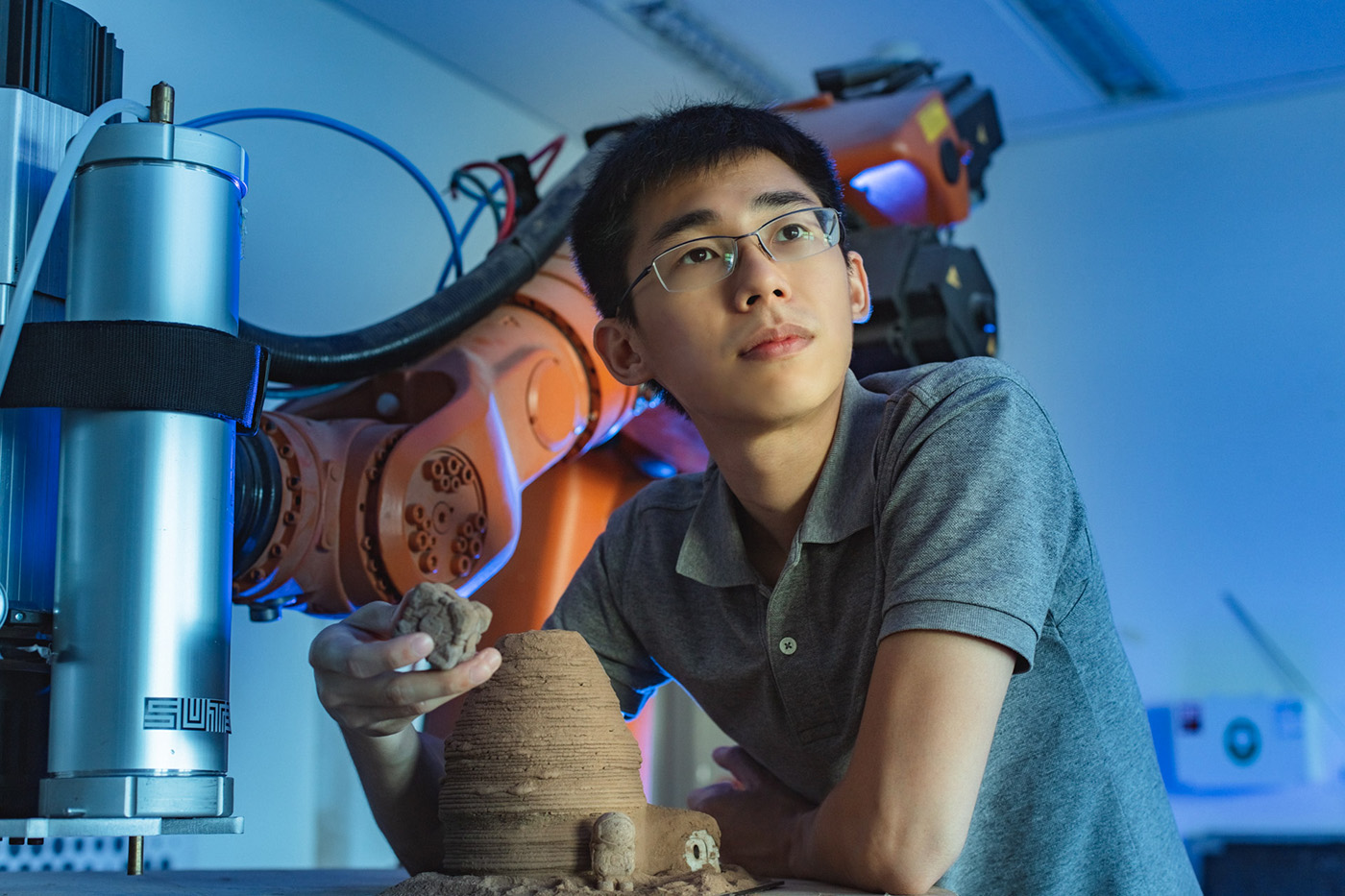 The hive-like design of the team’s 3D-printed habitat model is inspired by MARSHA – one of the winning submissions from NASA’s 3D-Printed Habitat Challenge.
The hive-like design of the team’s 3D-printed habitat model is inspired by MARSHA – one of the winning submissions from NASA’s 3D-Printed Habitat Challenge.
Enabling a circular Martian ecosystem – starting with insects
Remember the insect eggs? Insects (such as crickets and black soldier flies) can be easily transported from Earth as insect eggs and used to start/complement an artificial ecosystem to sustain human life on Mars.
While sustainability is an increasingly important concern here on Earth, it’s not just a good-to-have concept on Mars – it’s imperative. Every resource counts, and has to be accounted for (including our poop!).
 The team’s vision of a circular ecosystem on Mars.
The team’s vision of a circular ecosystem on Mars.
“Here, we’re illustrating a circular environment that integrates three key areas of needs: food production, materials for manufacturing, and waste management,” Shiwei points out. “So from one or two species of Earth’s hardy little critters, we can harvest protein for food, chitin for building materials/products, and we have an army of bio-converters for waste management.”
“Insects are easily scalable, resource-efficient, and most importantly, they enable a fully circular ecosystem,” Shiwei explains.
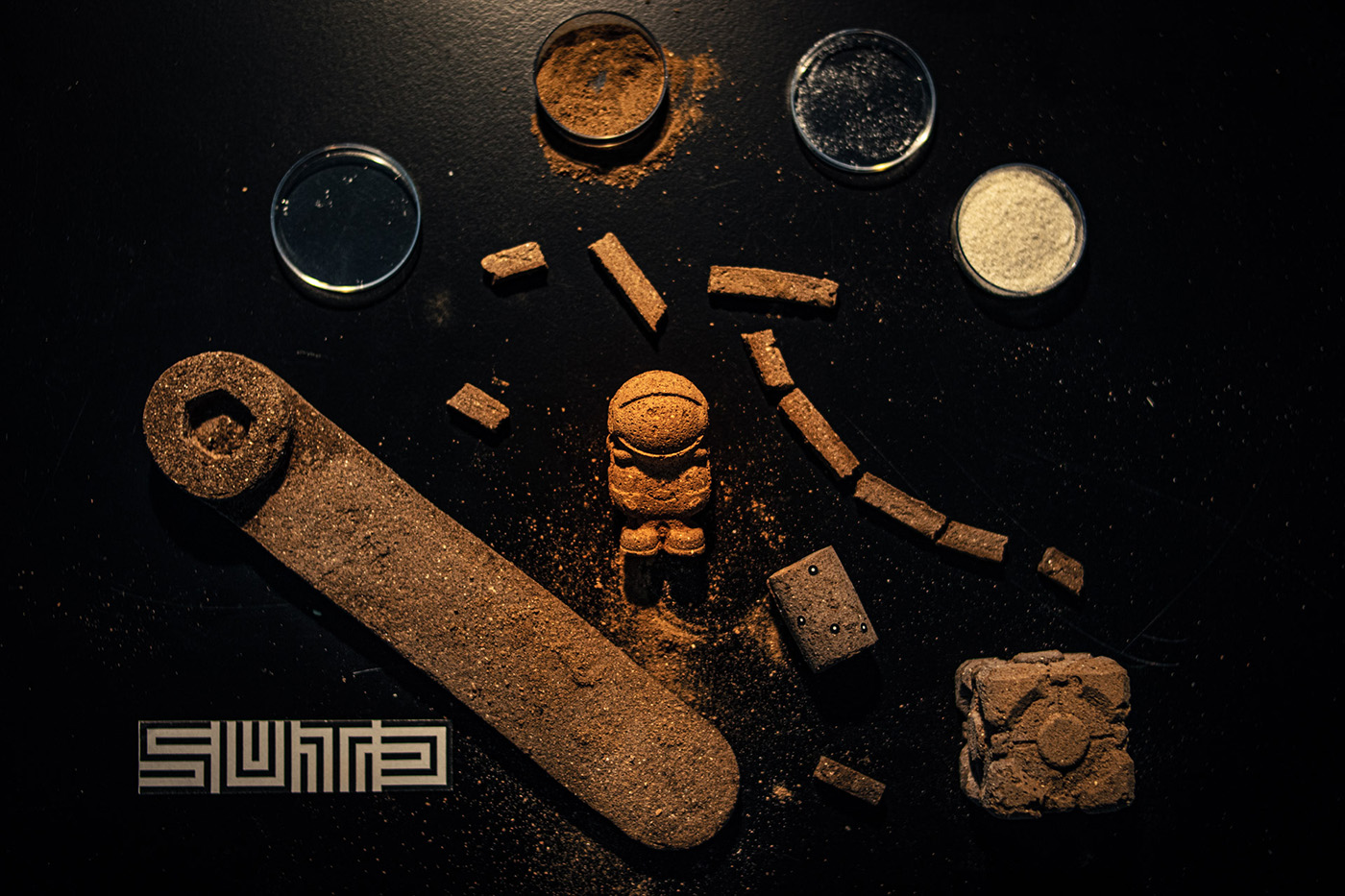 From utilitarian objects to complex geometries – Martian biolith can be moulded into different objects without the need for advanced tools.
From utilitarian objects to complex geometries – Martian biolith can be moulded into different objects without the need for advanced tools.
An inspiring PhD journey
While this cosmic discovery is impressive news to us, Shiwei is taking it in his stride. “I don’t know … ,” he responds with a smile. “I’m happy that people are inspired by my research,” he laughs, “but it’s also work that I have to do every day.”
What gives him a new perspective, however, is his PhD journey. “One of the biggest lessons I’ve learnt is how to cope with failure, and not seeing it as a disappointment,” he remarks. “In research, you’ll fail more than you succeed. You’ll see that the world isn’t just made in black and white, and that really helped me grow as a person.”
For the ex-corporate engineer, Shiwei is happy that he now has the resources to bring his ideas to life. “(Before I joined SUTD) I heard from a friend that the culture here is very tight-knit and entrepreneurial. There’s a lot of freedom to take risks and explore different ideas. I like that freedom. That’s why I’m here,” he recalls. “I’m thankful that Prof Javier is very open about my topic, and didn’t shut it down just because it’s esoteric.”
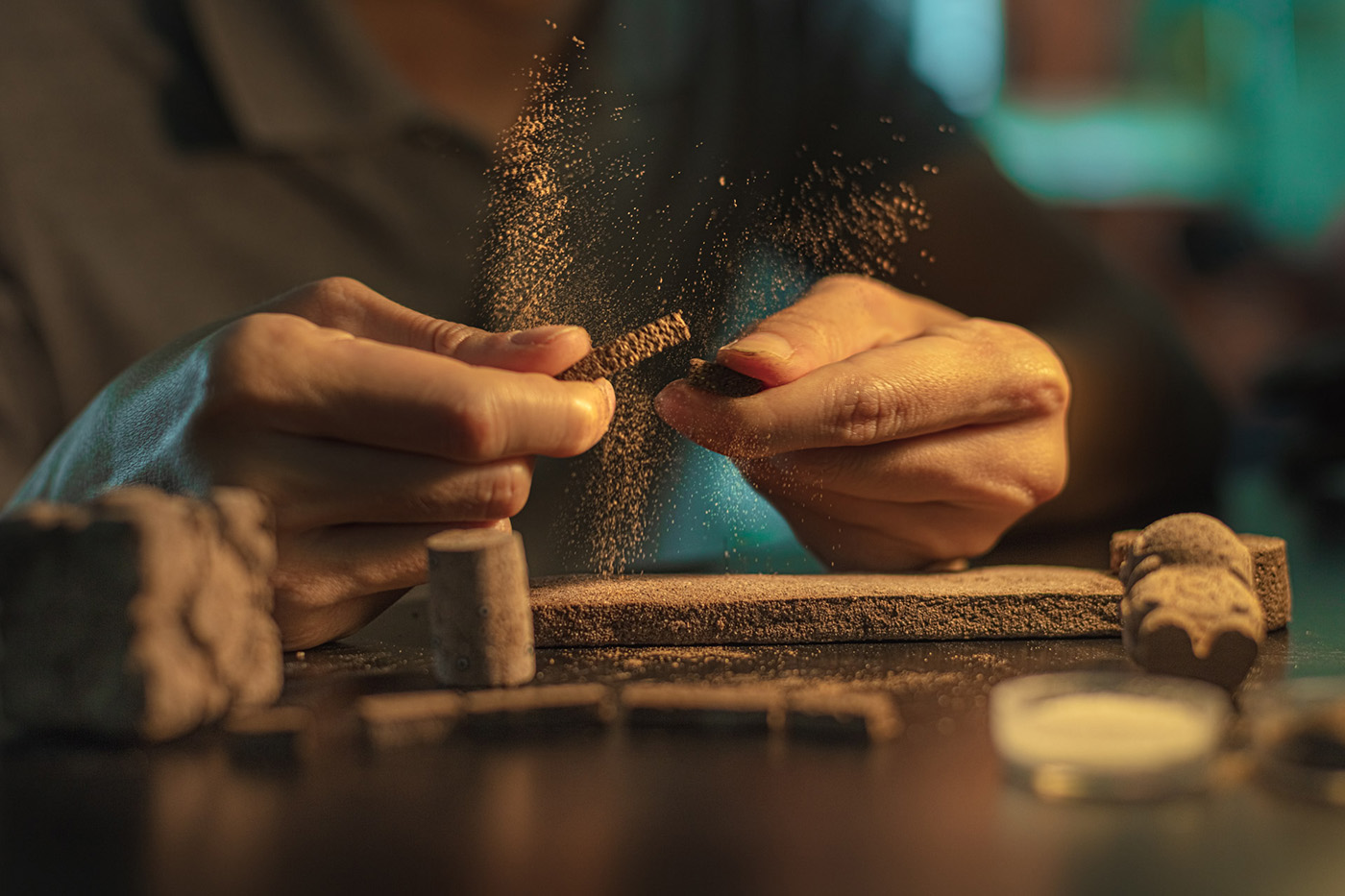 Reddish-hued regolith: Fine surface materials that can be found in abundance all over the red planet.
Reddish-hued regolith: Fine surface materials that can be found in abundance all over the red planet.
Small but mighty
Meanwhile, Shiwei is looking for collaborators and space agencies to test his biolith in actual space conditions – an opportunity that not many can have access to. “Personally, I feel that Singapore has the ability and knowledge to contribute to this global effort in space exploration. We just have to come together and pool our strengths. I really think we can.”
Just like how tiny insects have an important role in an entire ecosystem that’s out of this world, who’s to say we can’t do this?
Thinking about applying to SUTD?
Find out more about our programmes and application process here.




















